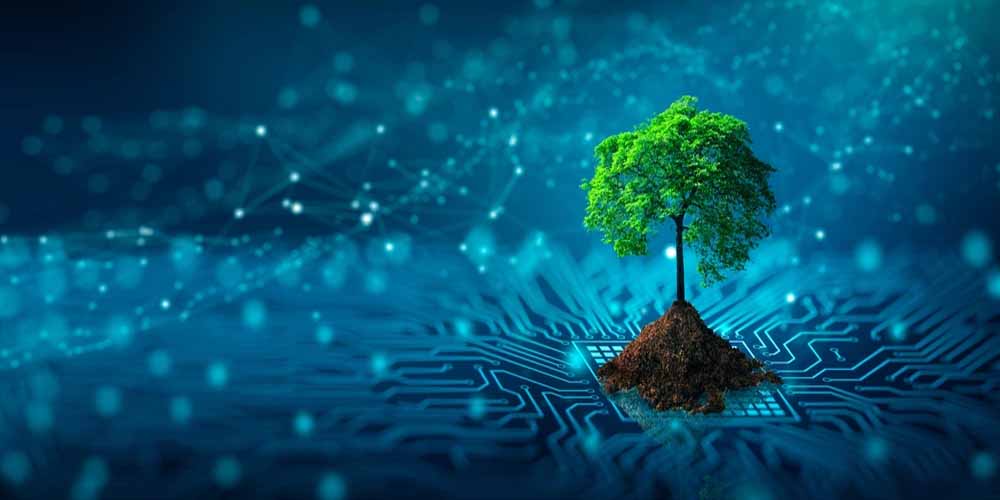Understanding Green Information Technology and the Product Lifecycle Management

The concept of Green IT came into practice in 1992 when the US Environmental Protection Agency launched a voluntary labeling program Energy Star, that helps organizations save money. It also helps them reduce gas emissions from the Greenhouse by identifying products that offer superior energy efficiency. The other components of Green IT include redesigning of data centers and the growing popularity of virtualization, green networking and cloud computing.
The Green IT factsheet informs us about the number of electronic items used worldwide. In 2019, more than 2 billion mobile phones, tablets and PCS were shipped worldwide. People have mobile phones more than access to safe sanitation. The energy and environmental impact on the world because of this has also been mentioned in the factsheet.
Electricity used in the US for servers and data centers creates 35 million metric tons of Carbon dioxide every year. Computer electricity consumption also varies with age, hardware and user habits. A desktop computer needs 66 W while an idle one in sleep mode requires 1.9 W. Comparatively laptops require less power but one can just imagine the power required by high-end servers that need to be active 24×7.
Understanding Green IT Product Lifecycle Management
Product lifecycle management (PML) is a strategic process of managing the journey of a product right from the first process of ideation, followed by the development, service and then disposal. In simpler terms, it means managing a product right from the cradle to its grave.
Before buying new IT equipment, one can consider purchasing a refurbished one which will not only give the required performance you need but one can get it at a fraction of the original cost. This will also reduce the use of natural resources because it extends the life of the product and reduces the need to manufacture another one.
There are certain things and questions one must keep in mind before making an IT hardware purchase:
- To find out the expected useful life of the existing IT product
- If it is easily upgradeable without replacement
- The anticipated energy usage and its operating cost
- The resale value of the IT equipment
Refurbished equipment offers a way to meet expected performance at a lower cost than the new IT equipment. In the era of limited availability of cost effective IT products, a refurbished product can keep the operations running smoothly with zero to minimal downtime.
IT Equipment Recycling
The IT equipment spends the vast majority of its life in the use and server maintenance phase. Over time, technology tends to become less energy efficient which means upgrading your hardware and taking advantage of these improvements can cut down energy consumption and reduce carbon footprint.
Here are some Key IT asset management critical questions to keep in mind:
- What product do we have?
- is it worth spending money and required energy operating the IT product that we don’t require?
- Is the data center energy efficient?
- Is there time to replace outdated and inefficient IT equipment?
- Can power consumption be reduced with the help of different equipment?
The IT equipment recycling process starts with a comprehensive inventory of existing equipment and there are many software tools that can help with the process too. Once the assets are handled properly you can optimize the deployment and the management. To get your arms around IT inventory you can utilize any Asset Management Portal or an in-house database of the IT inventory, to begin with. Then you can choose a subset of products from an entire list of IT equipment that is there to be recycled and prioritize the process accordingly. This will be efficient and we suggest you have a workflow for the process which will smoothen things up during the entire IT equipment recycling lifecycle process.
IT Disposal and Repurpose
As per various studies, waste of electronic equipment or e-waste makes up a small percentage of landfills about 2 %. However, their toxic waste materials make up a significant percentage of nearly 70%. One must not dispose of old IT equipment by just throwing it away or giving it to a third-party vendor who does not have a proven process of refurbishing the product appropriately. There is a possibility that there’s life left in the IT equipment and it could be eligible for reuse.
There will be a time when electronic items reach a point of obsolescence and reusing them won’t be an option. IT equipment recycling is then the best option because it converts the materials into raw commodities for manufacturing items. This avoids eliminating the need to mine ore from Earth which is the most environmentally damaging activity on the planet. Thus, make sure you are taking steps to recycle or partner with someone who specializes in ITAD (IT Asset Disposition).
Consider taking backups, relocating software, managing data, Information security and mitigating risks associated with disposal. PARMAR ENTERPRISE offers a secure, sustainable asset disposition service that can dramatically reduce disposition costs and security risks. Do reach out to our experts today to know more about the IT equipment buyback program trusted widely by our clientele and take a step towards contributing in creating a sustainable environment for the future.
